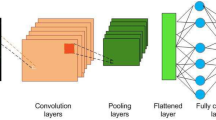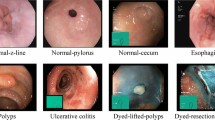Abstract
Prohibited item detection from X-ray images determines whether any prohibited items are present in baggage, and great progress has recently been made in this field with the development of deep learning. Nevertheless, the appearance of an occluded item interacts with the cover, which is different from occlusions encountered in conventional object detection. We design three mechanisms to handle this challenge on the assumption that the occluded part is still partially observed. First, we propose a scale interaction module in which the features in neighboring scales interact one or more times to enhance the model’s perception ability. Then, we design a cross-image weakly supervised semantic analysis model utilizing the coattention mechanism to perceive similar and different targets, breaking through the information bottleneck of the isolated detection of a single image. Finally, we introduce a multitask learning module to simultaneously optimize the model at the global level and pixel level. We evaluate our approach on the publicly available security inspection X-ray (SIXray) dataset, the occluded prohibited items X-ray (OPIXray) dataset, and the HIXray dataset, and the results show that our approach is competitive with other X-ray baggage inspection approaches.











Similar content being viewed by others
References
Akcay S, Atapour-Abarghouei A, Breckon TP (2018) Ganomaly: semi-supervised anomaly detection via adversarial training. In: Asian conference on computer vision, pp 622–637
Akcay S, Kundegorski ME, Willcocks CG et al (2018) Using deep convolutional neural network architectures for object classification and detection within x-ray baggage security imagery. IEEE Trans Inf Forens Security 13(9):2203–2215
Cui Y, Oztan B (2019) Automated firearms detection in cargo x-ray images using retinanet. In: Anomaly detection and imaging with X-Rays (ADIX) IV, p 109990P
Fu J, Liu J, Tian H et al (2019) Dual attention network for scene segmentation. In: Proceedings of the IEEE/CVF conference on computer vision and pattern recognition, pp 3146–3154
Ghiasi G, Cui Y, Srinivas A et al (2021) Simple copy-paste is a strong data augmentation method for instance segmentation. In: Proceedings of the IEEE/CVF conference on computer vision and pattern recognition, pp 2918–2928
Hacohen G, Weinshall D (2019) On the power of curriculum learning in training deep networks. In: International conference on machine learning, pp 2535–2544
Hassan T, Akcay S, Bennamoun M et al (2020) Cascaded structure tensor framework for robust identification of heavily occluded baggage items from x-ray scans. arXiv preprint arXiv:2004.06780
He K, Zhang X, Ren S, et al (2016) Identity mappings in deep residual networks. In: Proceedings of the european conference on computer vision, pp 630–645
Jain DK et al (2019) An evaluation of deep learning based object detection strategies for threat object detection in baggage security imagery. Pattern Recogn Lett 120:112–119
Lin TY, Goyal P, Girshick R, et al (2017) Focal loss for dense object detection. In: Proceedings of the IEEE international conference on computer vision, pp 2980–2988
Liu JJ, Hou Q, Cheng MM et al (2019) A simple pooling-based design for real-time salient object detection. In: Proceedings of the IEEE/CVF conference on computer vision and pattern recognition, pp 3917–3926
Liu Z, Lin Y, Cao Y, et al (2021) Swin transformer: Hierarchical vision transformer using shifted windows. In: Proceedings of the IEEE/CVF international conference on computer vision, pp 10012–10022
Miao C, Xie L, Wan F, et al (2019) Sixray: A large-scale security inspection x-ray benchmark for prohibited item discovery in overlapping images. In: Proceedings of the IEEE/CVF conference on computer vision and pattern recognition, pp 2119–2128
Qiao S, Chen LC, Yuille A (2021) Detectors: Detecting objects with recursive feature pyramid and switchable atrous convolution. In: Proceedings of the IEEE/CVF conference on computer vision and pattern recognition, pp 10213–10224
Ren S, He K, Girshick R et al (2015) Faster r-cnn: Towards real-time object detection with region proposal networks. Proc Adv Neural Inf Process Syst 28:91–99
Tao R, Wei Y, Jiang X, Li H, Qin H, Wang J, Ma Y, Zhang L, Liu X (2021) Towards real-world x-ray security inspection: A high-quality benchmark and lateral inhibition module for prohibited items detection. In: Proceedings of the IEEE/CVF international conference on computer vision, pp 10923–10932
Tian Y, Chen T, Cheng G et al (2022) Global context assisted structure-aware vehicle retrieval. IEEE Trans Intell Transp Syst 22(12):1–10
Tian Y, Cheng G, Gelernter J et al (2020) Joint temporal context exploitation and active learning for video segmentation. Pattern Recogn 100:107158
Tian Y, Gelernter J, Wang X et al (2018) Lane marking detection via deep convolutional neural network. Neurocomputing 280:46–55
Tian Y, Gelernter J, Wang X et al (2019) Traffic sign detection using a multi-scale recurrent attention network. IEEE Trans Intell Transp Syst 20(12):4466–4475
Tian Y, Hu W, Jiang H et al (2019) Densely connected attentional pyramid residual network for human pose estimation. Neurocomputing 347:13–23
Tian Y, Wang H, Wang X (2017) Object localization via evaluation multi-task learning. Neurocomputing 253:34–41
Tian Y, Wang X, Wu J et al (2019) Multi-scale hierarchical residual network for dense captioning. J Artif Intell Res 64:181–196
Tian Y, Zhang Y, Xu H et al (2022) 3d tooth instance segmentation learning objectness and affinity in point cloud. ACM Trans Multimed Comput Commun Appl 18:202–211
Tian Y, Zhang Y, Zhou D et al (2020) Triple attention network for video segmentation. Neurocomputing 417:202–211
Vaswani A, Shazeer N, Parmar N, et al (2017) Attention is all you need. In: Proceedings of the advances in neural information processing systems, pp 5998–6008
Wang CY, Bochkovskiy A, Liao HYM (2021) Scaled-yolov4: Scaling cross stage partial network. In: Proceedings of the IEEE/CVF conference on computer vision and pattern recognition, pp 13029–13038
Wang X, Girshick R, Gupta A, et al. (2018) Non-local neural networks. In: Proceedings of the IEEE conference on computer vision and pattern recognition, pp 7794–7803
Wei Y, Tao R, Wu Z, et al. (2020) Occluded prohibited items detection: An x-ray security inspection benchmark and de-occlusion attention module. In: Proceedings of the ACM international conference on multimedia, pp 138–146
Yang J, Li C, Zhang P, et al. (2020) Focal self-attention for local-global interactions in vision transformers. In: Proceedings of the advances in neural information processing systems, pp 138–146
Yu J, Lin Z, Yang J, et al. (2019) Free-form image inpainting with gated convolution. In: Proceedings of the IEEE/CVF international conference on computer vision, pp 4471–4480
Acknowledgements
The authors would like to thank AJE (www.aje.com) for its linguistic assistance during the preparation of this manuscript.
Author information
Authors and Affiliations
Corresponding author
Ethics declarations
Conflict of interest
All authors declare that they have no conflicts of interest regarding the publication of this paper.
Additional information
Publisher's Note
Springer Nature remains neutral with regard to jurisdictional claims in published maps and institutional affiliations.
This work was supported in part by the National Natural Science Foundation of China under Grant 61972351 and 62111530300, in part by the Public Welfare Technology Research Project of Zhejiang Province under Grant LGF19G010002 and LGF20G010002, in part by the Science and Technology Program of Zhejiang Province (Key Research and Development Plan) under Grant 2022C01005, and in part by the Special Project for Basic Business Expenses of Zhejiang Provincial Colleges and Universities under Grant JRK22003.
Rights and permissions
About this article
Cite this article
Liu, D., Tian, Y., Xu, Z. et al. Handling occlusion in prohibited item detection from X-ray images. Neural Comput & Applic 34, 20285–20298 (2022). https://doi.org/10.1007/s00521-022-07578-7
Received:
Accepted:
Published:
Issue Date:
DOI: https://doi.org/10.1007/s00521-022-07578-7




